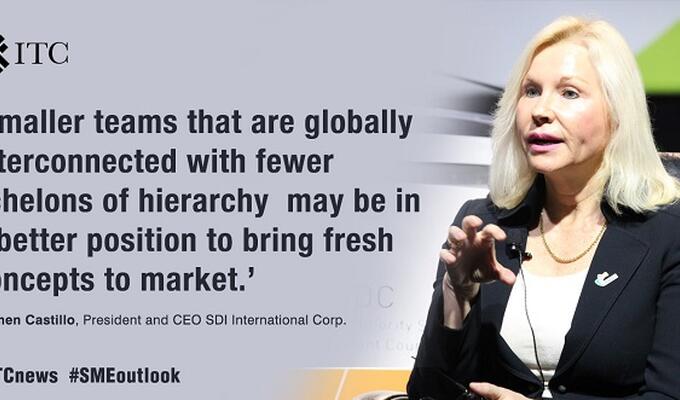
In business, David and Goliath should sometimes work together
Competition has been the engine behind business and supply chains since the two sprung into existence. Even back when the first people swapped goods and bartered for services – and when the term ‘supply chain’ was millennia away from being coined – competition was a driving force.
With competition playing such a critical role in the business realm, one might underestimate the smaller players. How can a regional hotel brand compete with hospitality giants like Marriott and Hilton? How can the small or mid-sized retailer go toe-to-toe with Walmart?
True, the smaller players are sometimes struggling to emerge from their larger competitors’ shadows. Indeed, titans like Amazon have proved ruthless adversaries to the traditional, brick-and-mortar stores on main street.
But that doesn’t mean SMEs aren’t a force to be reckoned – or partnered – with. While they may not have the deep pockets or name-recognition of the big guys, they possess their own proficiencies: like the ability to adapt quickly, to be nimble, and to change at a moment’s notice. They are also hungry for growth and, unable to afford customer attrition, intensely loyal.
Often, these proficiencies outstrip the bloated bureaucracies and lumbering pace of the giants. For proof, look to the world of online payments and transactions. It’s a landscape that has grown explosively over the past few decades, and still manages to change and grow rapidly. Paying online with credit cards has been supplanted by services and applications like PayPal and Venmo. And now, the currency we’re accustomed to – dollars, euros, pounds and yen – is quickly becoming passé: it’s now all about Bitcoin.
In this tumultuous payment landscape, the smaller guys can have a clear and distinct advantage. Smaller companies, especially tech start-ups out in colorful and innovative Silicon Valley, have been quick to adopt Bitcoin payments. But the industry giants, not so much. Even presidential campaigns – those mammoth undertakings that require hundreds of millions of dollars to operate– have been slow to adapt. Rand Paul is the first-ever candidate to accept Bitcoin donations.
Bitcoin usage is merely a single example of pioneering practices. Arguably, smaller companies may well have an edge in swiftly delivering new designs or products. Agile, smaller teams that are globally interconnected with fewer echelons of hierarchy and less bureaucracy may be in a better position to bring fresh concepts to market. Even the slightest change management can progress at a lumbering pace.
Combining strengths
In the world of supply chain process outsourcing, this struggle behind big and small doesn’t need to exist. Indeed, the two can come together to favorably complement one another.
The Marriotts and Walmarts of the world have their own core competencies, and they perform them spectacularly: housing guests around the globe, and retailing a vast variety of goods. Why, then, would they concentrate their energies on repeatedly retooling or re-engineering an untold quantity of corporate
processes? Undeniably, for efficiency: but, should they?
Consider SDI, the medium-sized supply chain process outsourcing business that works with Fortune 500 companies. SDI can partner with companies and perform the tasks that are not strategic for the larger company to carry out. These tasks, for example, include managing independent contractors and non-strategic (tail-end) corporate spend. Often, an enterprise lacks the time, resources and proficiency to execute nonessential processes efficiently. Enter a capable partner. SMEs – through rapid innovation, closer contact to customers and a menu of evolving skills such as data analytics and visual modelling – keep their larger competitors on their toes and are precisely the associates with whom to partner.
SDI – or comparable, competent outsourcing businesses – can be particularly essential during difficult times, when there may be, for example, a constraint on commodities and services, such as plant closings, tariff changes, and supply shortages. Not to mention the ability to offer a more intimate customer experience.
In fact, examples of industry giants working with smaller global experts are swiftly becoming popular, if not the norm. The Huffington Post (2015) recently noted: ‘As entrepreneurs, leaders, business owners of organizations small and large to succeed in the new world we need a new operating system; one that sees us move from a ‘competitive’ way of doing business to that of a “collaborative” workspace’. Who would have thought that NASA would join forces with Danish company Lego to form a multi-year partnership? The intent of the association has been to encourage children to increasingly take part in STEM (science, technology, engineering and math) subjects.
Ultimately, competitiveness and collaboration offer the marketplace a potent combination. Emerging and established SMEs may offer flexibility, independence and perhaps even a greater appetite for growth, but when coupled with their larger, veteran counterparts, the global market offers an array of quality goods and services.
This article is a part of ITC's SME Competitiveness Outlook 2015.



